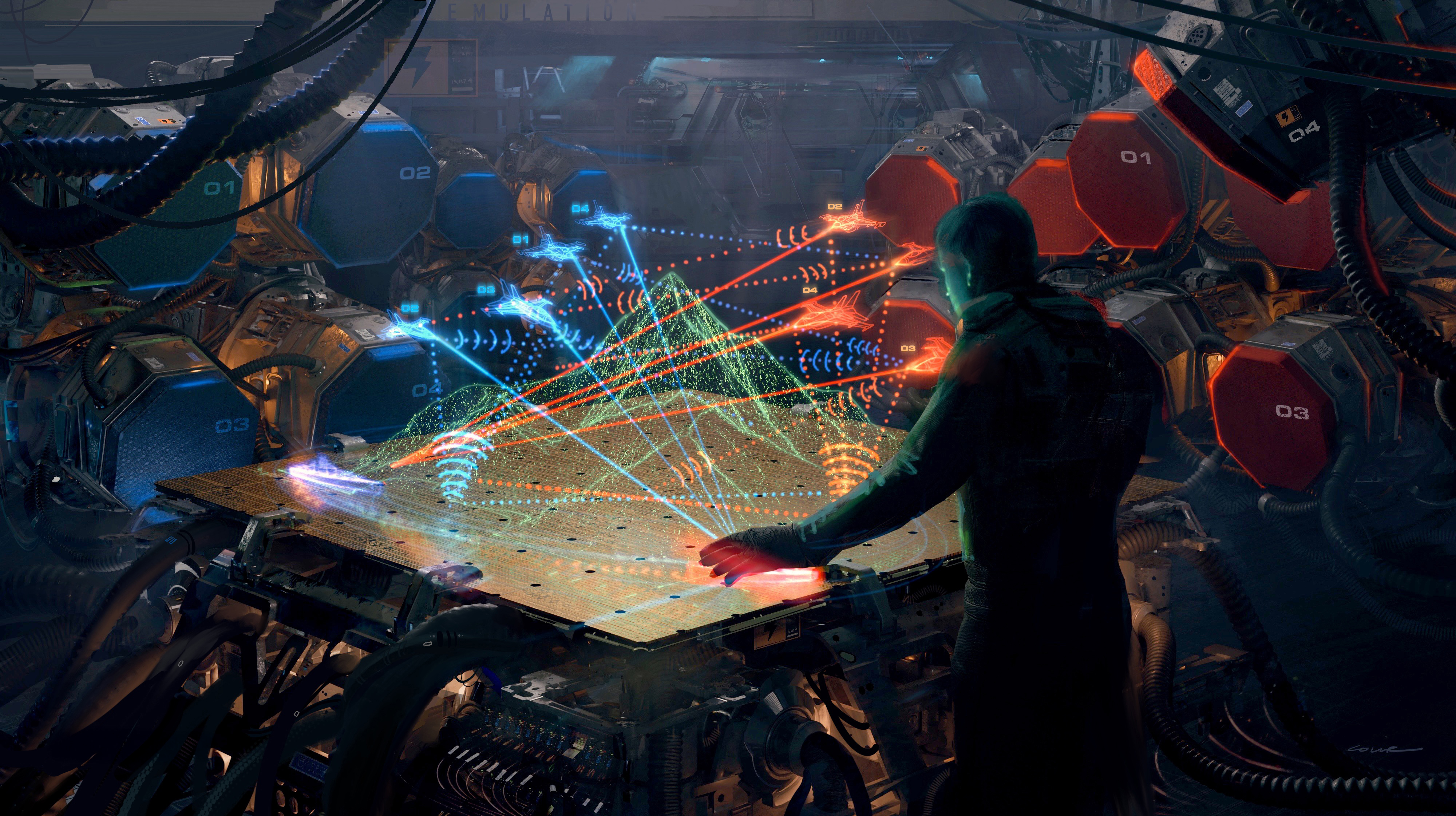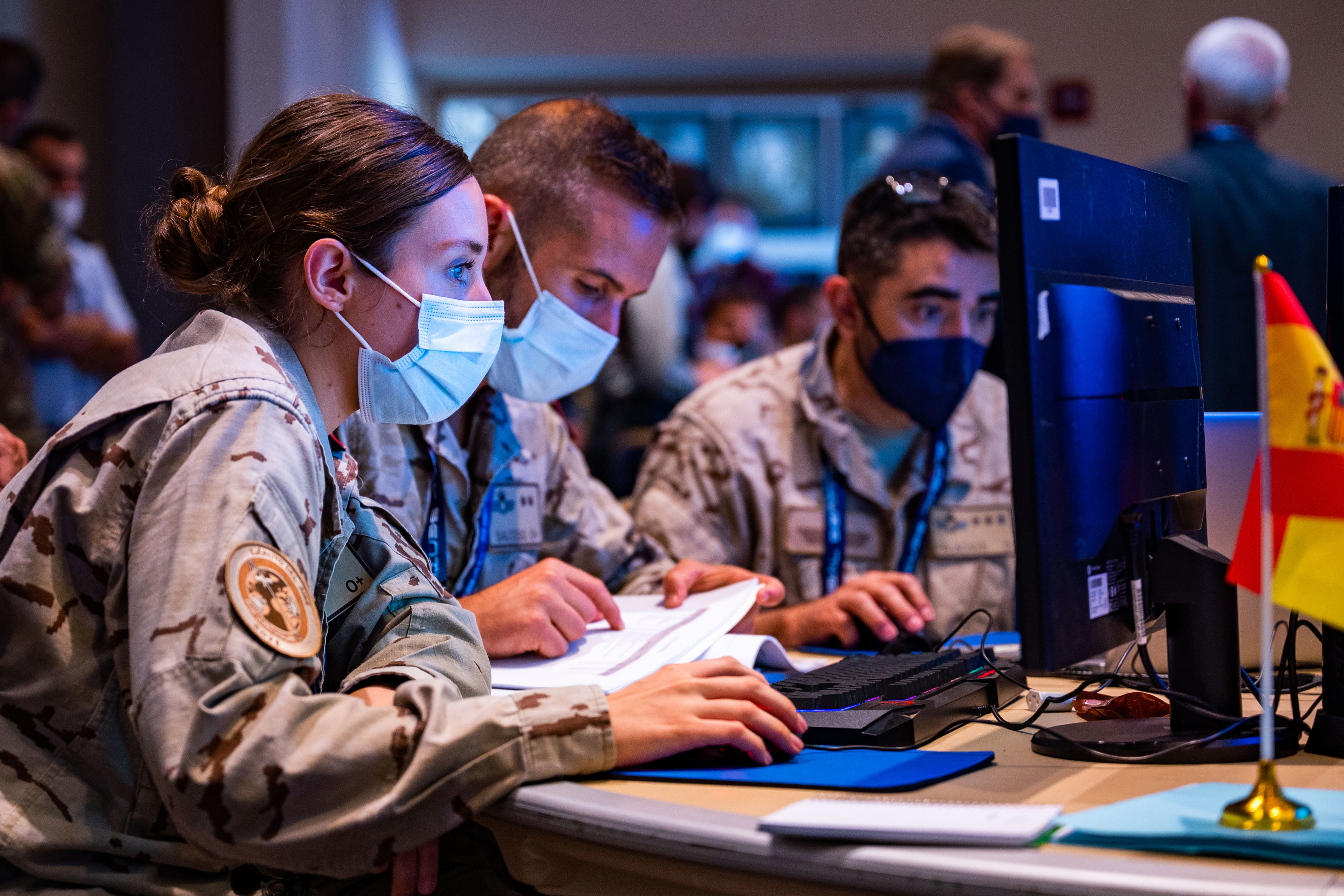
The Pentagon’s advanced research hub says it has built the world’s largest, most realistic electronic warfare test capability and plans to install it at a Navy lab later this year.
The Defense Advanced Research Agency has been developing its Digital Radio Frequency Battlespace Emulator, or DRBE, since 2019 with the goal of helping improve the Defense Department’s ability to test new electronic warfare capabilities or provide realistic EW effects like radar jamming and spoofing.
The system uses a real-time high-performance computing architecture to reduce latency and provide more realistic RF simulation, according to program manager Anna Tauke-Pedretti.
In an interview with Defense News, Tauke-Pedretti said DRBE provides an option for DOD testers that lets them better tailor test events to specific scenarios or needs.
“We’re able to test systems under more controlled and varying scenarios,” she said. “We can choose what we test against and what our environment looks like so we can better understand how our systems respond in certain environments.”
EW simulation is a challenge for the DOD today — both in the lab and on live flight ranges. Labs often struggle to provide a realistic simulation, and open-air ranges are in high demand and the testing itself is complex and expensive. Tauke-Pedretti said DRBE is designed to tackle these concerns and make it easier for the military services to access high-fidelity testing.
The system itself takes up a few server racks, and Tauke-Pedretti said it doesn’t have major space constraints, which makes integrating DRBE fairly straightforward. She noted, however, that its power and cooling needs do require additional infrastructure.
DARPA’s primary DOD partner for DRBE has been the Navy, and the program plans to transition the system to a service lab to start using the system operationally later this year. Tauke-Pedretti said other Pentagon agencies have shown interest in the system and DARPA is “actively exploring” options for integrating DRBE in other lab environments.
As the program prepares to hand over the initial system, Tauke-Pedretti said her office is already thinking about what the next generation of this capability could look like. That means increasing the number of systems that connect to DRBE, growing the size of the simulation and expanding its compute power.
At the heart of that expansion is an optical interconnect technology that will increase the system’s bandwidth and connect more systems with lower latency. That could allow DRBE to support new missions, like battlespace autonomy, digital modeling and materials science.
“DRBE isn’t just a test tool; it has the potential to be a strategic enabler for next-generation defense technologies,” Tauke-Pedretti said. “By pushing the boundaries of real-time emulation and compute, we’re laying the groundwork for smarter, faster, and more resilient EW systems.”

Electronic Warfare
C4ISRNet
Bitcoin
Ethereum
Monero

Donate Bitcoin to The Bitstream
Scan the QR code or copy the address below into your wallet to send some Bitcoin to The Bitstream

Donate Ethereum to The Bitstream
Scan the QR code or copy the address below into your wallet to send some Ethereum to The Bitstream

Donate Monero to The Bitstream
Scan the QR code or copy the address below into your wallet to send some Monero to The Bitstream
Donate Via Wallets
Select a wallet to accept donation in ETH BNB BUSD etc..










